January 14-15, 2015 | Marriott Metro Center | Washington, DC
The Federal Cloud Computing Summit was held on January 14-15, 2015 at the Marriott Metro Center in Washington, D.C. Below is media coverage from the event.
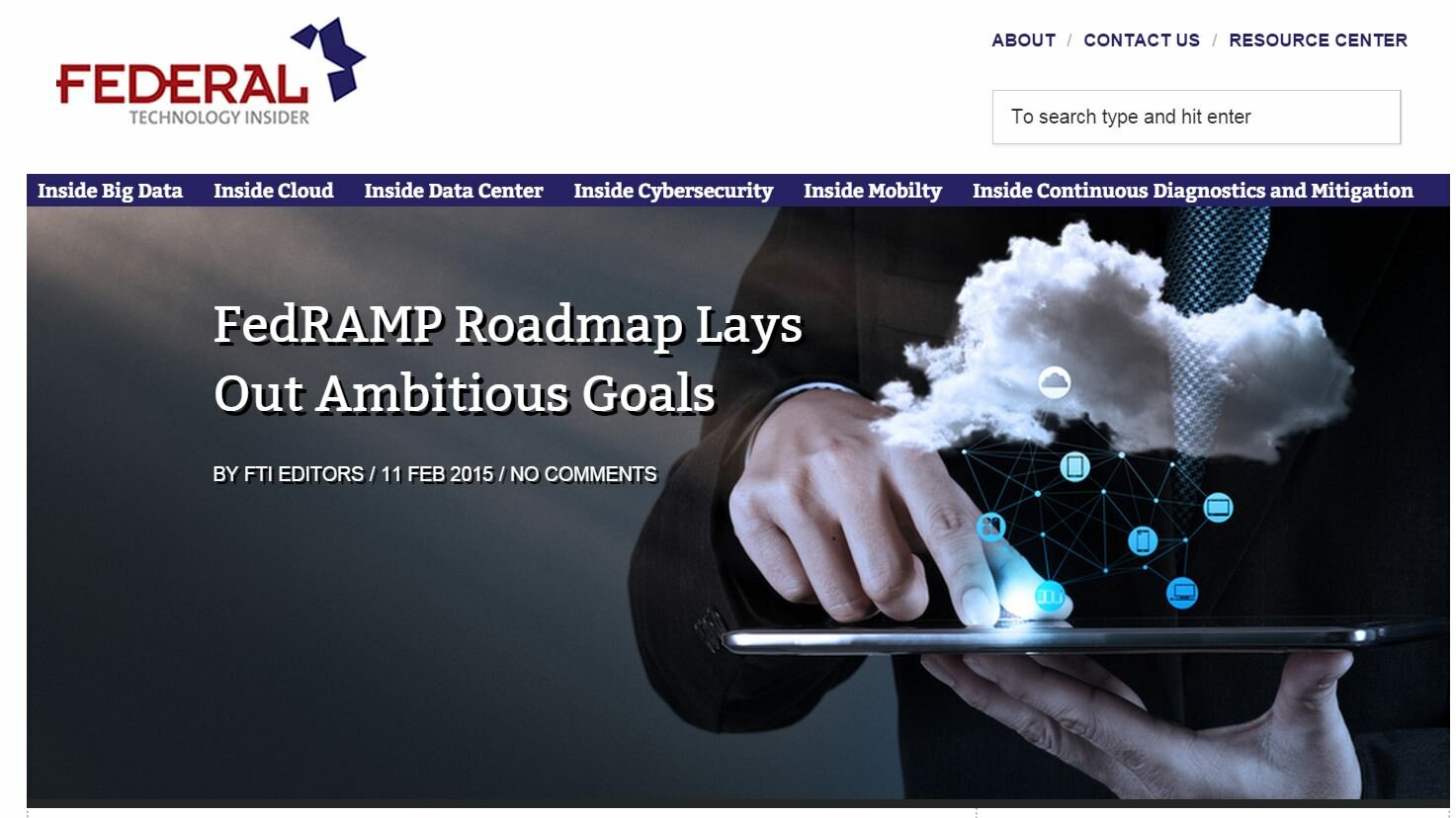
The Federal Risk Authorization Management Program – better known as FedRAMP – is three years old, as of December 2014, and the program’s director, Matt Goodrich, told attendees of the Advanced Technology Academic Research Center’s Cloud Computing Summit there is now a roadmap laying out the program’s goals over the next two years.
“There are three main tenets to the roadmap,” Goodrich said. “Objective 1 is to increase stakeholder engagement, increase the number of agencies implementing FedRAMP.” There is no single authoritative source of information on which agencies are using the cloud, he said, so in the next six months “we’re going to create something that we consider a good baseline.” (Full story)

Wolf Tombe, chief technology officer at U.S. Customs and Border Protection, recently shared an interesting tidbit about records management at CBP.
Speaking Jan. 15 at the Federal Cloud Computing Summit in Washington, D.C., Tombe said his agency is mandated to store certain records collected by its border-enforcement system, known as TECS, “for up to 75 years.”
That sounds crazy, but it’s totally true. (Full story)

The Department of Defense’s vision for cloud computing is about more than hosting public websites and data in commercial facilities.
DOD is pursuing several opportunities for migrating sensitive military data to the cloud to reduce costs and boost performance. Options include cloud hosting in facilities outside the United States, moving defense enterprise cloud services such as email to a commercial environment, and modernizing milCloud, the Defense Information Systems Agency’s (DISA) private cloud offering.
“As we work through using commercial providers, DOD CIO is going to make a determination as to whether or not those commercial providers can be used for all unclassified workloads, even national security systems,” DISA’s Chief Technology Officer David Mihelcic, told FedTech during the Federal Cloud Computing Summit in Washington, D.C., last week. “National security systems are things that, even if unclassified, are defined as mission critical. They are things that DOD needs to go to war.”
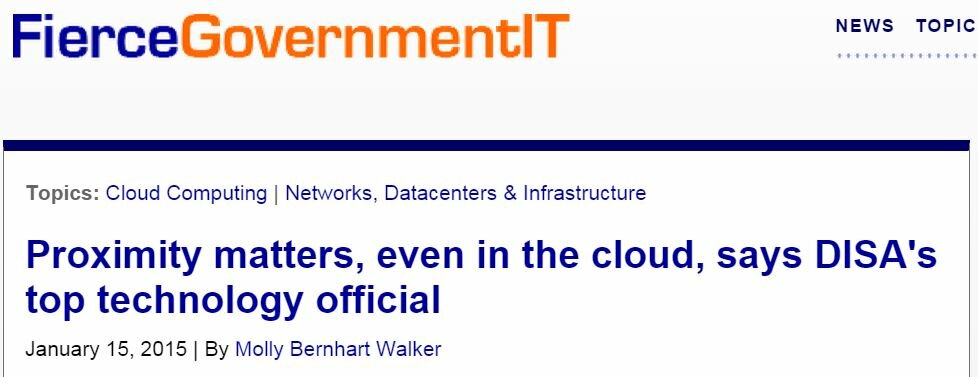
Having data available anytime, anywhere has long been touted as a major benefit of cloud computing, but a top Defense Information Systems Agency official said where data is physically located still matters.
“Even though we do want to believe that the cloud solves all our problems and everything should be managed and distributed, the speed of light is still a real thing,” DISA Chief Technology Officer David Mihelcic said Jan. 15 during the Federal Cloud Computing Summit in Washington, D.C. (Full story)
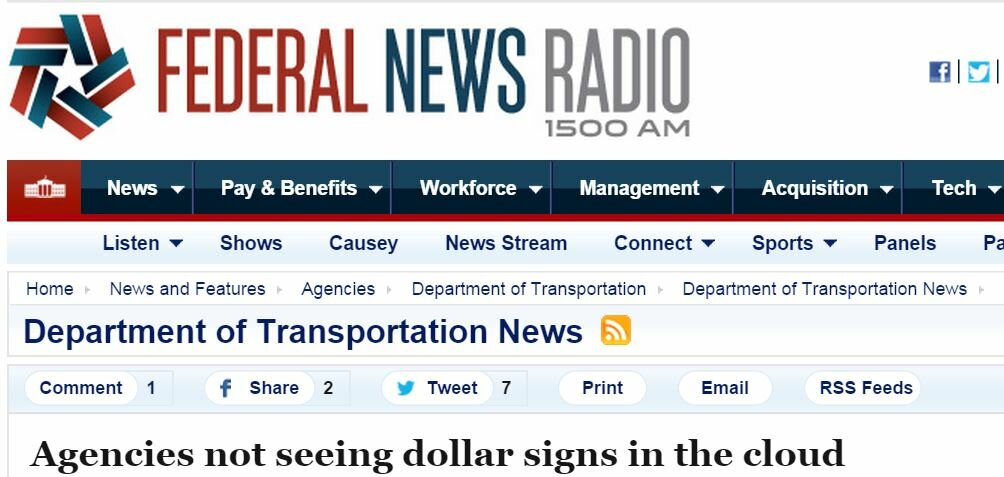
Agencies slowly are realizing the benefits of cloud computing do not rest in real dollar savings. Instead, agencies, such as the Transportation Department, should expect the move to cloud services to provide mission-focused value. Maria Roat, the DoT chief technology officer, said the cloud provides much more capability, which lets the organization be more flexible.
“When you talk about the costs, I don’t know that everyone knows the true costs of their systems and applications, and when you talk about the people, and when you talk about all the things that it really costs to run an application or to run something for your customers. But in moving to the cloud, there may not be that cost savings,” said Roat Thursday at the Federal Cloud Computing Summit, sponsored by FedSummits, in Washington. (Full story)

It’s been more than four months since federal Chief Information Officer Steven VanRoekelwalked off the job and into a new role using technology to fight the Ebola outbreak in West Africa. It’s still anybody’s guess whom the administration will name to fill VanRoekel’s shoes. Regardless, agency officials and tech implementers are sharing some items they think should be at the top of the yet-unknown federal CIO’s to-do list. For one thing, agencies are expecting action.
“I think there’s going to be much more implementation,” said Maria Roat, chief technology officer at the Transportation Department and the former head of the office responsible for vetting the security of prospective cloud computing services. Nextgov caught up with Roat at the [Federal] Cloud Computing Summit in Washington, D.C., this week. (Full story)

There’s been much discussion around the efficiencies to be gained from cloud computing – shuttering data centers and streamlining operations – but little talk of the freezing effect this end goal can have on the federal IT workforce.
“People would be much more inclined to stop hugging servers if you can tell them they’ll still have a job after that goes out the door,” said Dan McCrea, director of NOAA’s service delivery division. McCrea spoke Jan. 15 at the Federal Cloud Computing Summit in Washington, D.C. (Full story)

The Labor Department is in the conceptual stage of developing an enterprisewide cloud platform to integrate and modernize the department’s various IT abilities, like mobility and data sharing.
During a panel Thursday at the Federal Cloud Computing Summit in Washington, D.C., Labor Chief Information Officer Dawn Leaf described the idea behind the project — called the Digital Government Integrated Platform — and how using the cloud will better enable the more than half of the department’s employees who work in the field. The idea, though, is just in its infancy, completely dependent on funding for the department, which Leaf called “relatively underinvested.” (Full story)
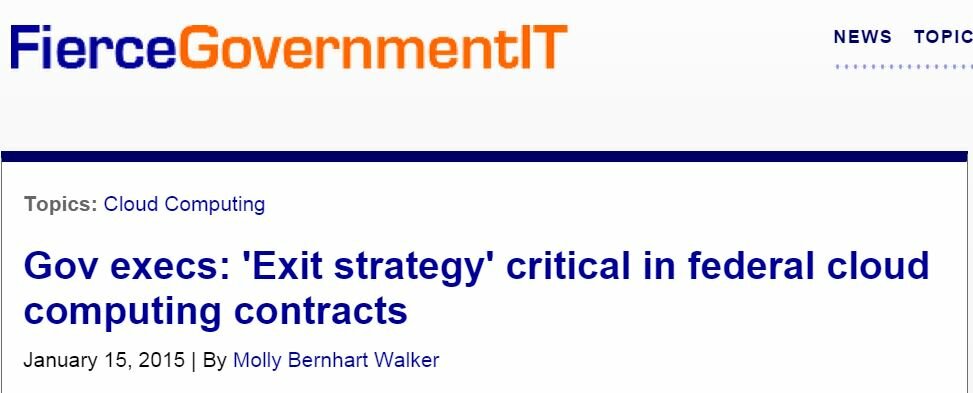
Interoperability and portability remain largely unaddressed issues among cloud services. And until all cloud computing services can ensure clients’ data is portable and interoperable, federal chief information officers need to think about how they can get out of their cloud contracts, said federal executives speaking Jan. 15 at the Federal Cloud Computing Summit in Washington, D.C.
“Make sure you have a good exit strategy in case you’re not happy with your provider,” advised Bob Bohn, cloud computing technical program manager at the National Institute of Standards and Technology. (Full story)

Maria Roat, the U.S. Department of Transportation’s Chief Technology Officer since August, is currently looking at how the department’s data is being collected, protected, utilized and stored. The data inventory is part of a two-year plan to overhaul how USDOT governs its data, with the aim of harnessing the data in ways that are most useful to the department and the public. Equally important is figuring out what data is not necessary.
“This has been an enlightening process,” Roat said Thursday at the Federal Cloud Computing Summit in Washington, D.C. “We constantly get batches and batches of data from a wide variety of sources that is only going to continue to grow. Our key is finding out how to manage all of this so we can most benefit from it.” (Full story)
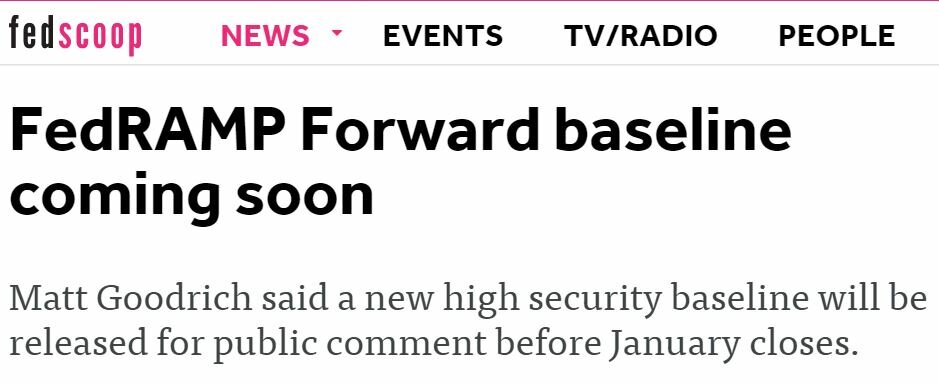
Matt Goodrich, the director of the Federal Risk and Authorization Management Program, told attendees of a cloud computing conference Thursday that the first draft the program’s new high-security baseline would come out before the end of the month. (Full story)
